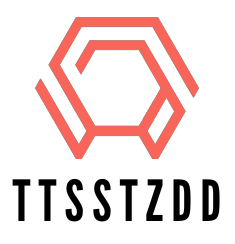In the high-stakes world of toxicology and emergency healthcare, poison center software plays a vital role in ensuring timely, accurate, and life-saving interventions. Designed specifically for poison control centers, hospitals, and emergency departments, this specialized software streamlines the process of handling toxic exposure cases, making it easier for healthcare professionals to make quick and informed decisions poison center software. As technology continues to reshape healthcare, poison center software stands out as a crucial innovation in public safety.
Poison control centers receive thousands of calls every day, ranging from accidental ingestions in children to chemical exposures in industrial settings. These centers must respond quickly, access the right information, and document each case thoroughly. Traditional methods of managing this information, such as paper records or basic spreadsheets, fall short in efficiency and accuracy. This is where poison center software provides an edge by offering a centralized, automated, and intelligent platform for case management.
One of the key features of poison center software is its real-time data access. Healthcare providers can instantly search toxicological databases to identify the substances involved in a particular case. Whether it’s a household cleaning product, prescription medication, or industrial chemical, the software enables staff to access information such as toxic effects, treatment guidelines, and potential interactions. This feature alone can mean the difference between a successful recovery and a life-threatening situation.
In addition to real-time information retrieval, poison center software excels in documentation and reporting. Every case is logged into a secure database, complete with patient details, substance exposure information, treatment protocols followed, and outcomes. This structured format not only helps in immediate case follow-up but also contributes to long-term research and public health surveillance. Over time, patterns can be identified—such as seasonal spikes in specific exposures or recurring incidents with certain chemicals—enabling proactive interventions.
Another critical advantage is communication integration. Many modern poison center software platforms are built with communication tools that connect toxicologists, emergency responders, and even the public. Some systems offer web portals, mobile applications, or call routing features that guide users to the appropriate expert in real time. This multi-channel connectivity ensures that help is never out of reach, regardless of the location or time of the incident.
Security and compliance are also top priorities. Poison center software must adhere to stringent healthcare regulations, including HIPAA and other data protection laws. Encryption, user access controls, and audit trails are typically standard features, ensuring that sensitive patient information is kept confidential and secure. These built-in safeguards not only protect patient privacy but also enhance the credibility and trustworthiness of poison control services.
Scalability is another important factor. As the demand for poison control support increases, especially in densely populated or high-risk areas, the software must adapt. Many solutions are cloud-based, allowing organizations to scale their operations without investing heavily in new infrastructure. Cloud deployment also ensures system reliability, data redundancy, and accessibility across multiple devices and locations.
From a training and workflow standpoint, poison center software brings consistency and standardization to operations. New staff can be trained using embedded guidelines and step-by-step workflows within the platform. Decision support tools such as risk assessment calculators or treatment checklists reduce human error and improve decision-making speed. This is particularly valuable during peak periods or in high-pressure environments where every second counts.
Moreover, the integration of artificial intelligence and machine learning is beginning to enhance the capabilities of poison center software. Predictive analytics can help flag high-risk cases or suggest probable outcomes based on historical data. Natural language processing enables faster case entry through speech recognition or automated transcription. These innovations not only improve operational efficiency but also elevate the level of care provided to patients.
In conclusion, poison center software is transforming the way toxic exposure incidents are managed. By offering instant access to toxicological information, improving communication, ensuring secure documentation, and enabling data-driven decisions, it has become an indispensable tool in emergency response and healthcare. As technological advancements continue to emerge, this software will only become more powerful, helping poison centers around the world save more lives, faster and with greater accuracy.
